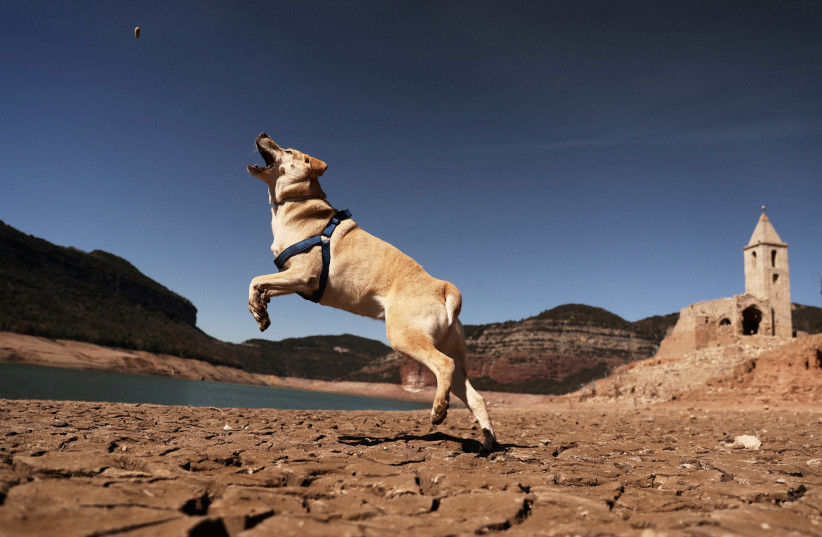The Church of San Roman, dating back a 1000-years, has been rediscovered in Catalonia in Spain.
The church, which was built in 1062, was flooded in the 1960s when a dam was constructed nearby. The drought lowered the water levels in the Sau reservoir to 10% capacity, and that enabled the church to become visible once more.
Spain's drought
Spain is in the grip of a long-term drought after 36 months of below-average rainfall, with some parts so parched that officials have asked people to cut water use and meteorologists warn of worse to come.
Some reservoirs in Catalonia, which surrounds Barcelona, are so low that old constructions like bridges and a church bell tower have resurfaced, people are flying kites on lake beds and navigation apps show someone in the middle of the water when they are standing on dry land.
The weather will be drier and hotter than usual this spring along the northeastern Mediterranean coast that includes Catalonia. The dry weather will heighten the risk of wildfires even as it brings average rainfall nationwide, Spain's meteorological agency AEMET said.

"This is an area that we could describe as no-man's land because it is not getting affected by the storms coming from the Atlantic and the Mediterranean," AEMET spokesperson Ruben del Campo told Reuters, referring to Spain's northeast.
He pointed to climate change as one of the leading factors.
"Heat waves in this geographical area of the planet are more frequent, are increasing more frequently than in other regions," he said.
Spain's drought nationwide measured over 12 months is no worse than it was in 2017, 2012 and 2005. But the average water level in Catalonia's reservoirs stands at just 27%, slightly above the level in parts of the southern region of Andalucia.
After 25 months without significant rain, Catalonia earlier this month asked most of its seven million residents to cut water use by 8% at home, 15% in industry and 40% in agriculture.
In the Sau reservoir, 100 km (62 miles) north of Barcelona, which is only 10% full, boats were catching tons of fish that would struggle to survive in the low-oxygen water in order to protect drinking water.
Invasive species will be euthanized while native ones will be released in nearby waters. Access has been restricted over concerns that people will get trapped in the mud.
